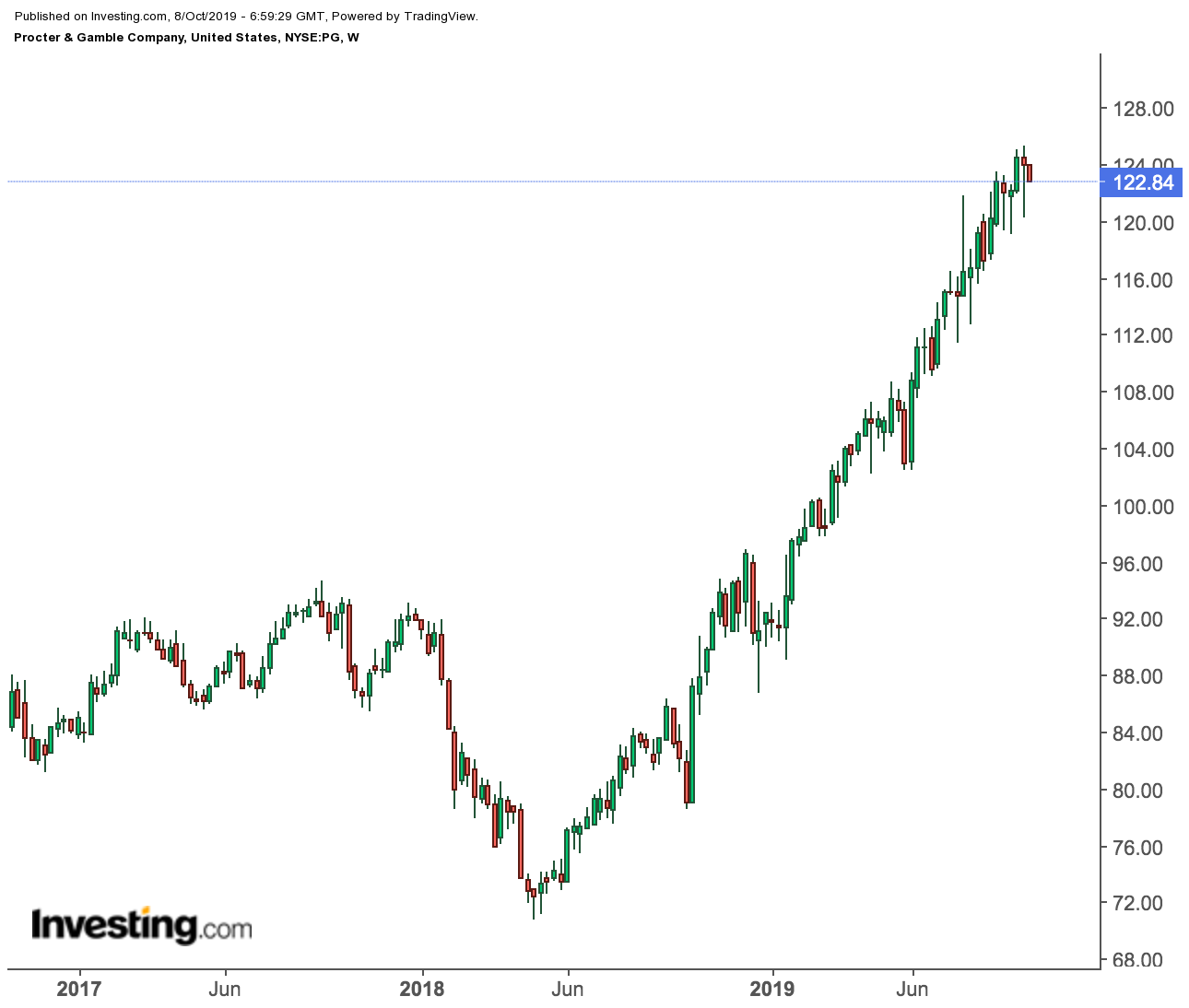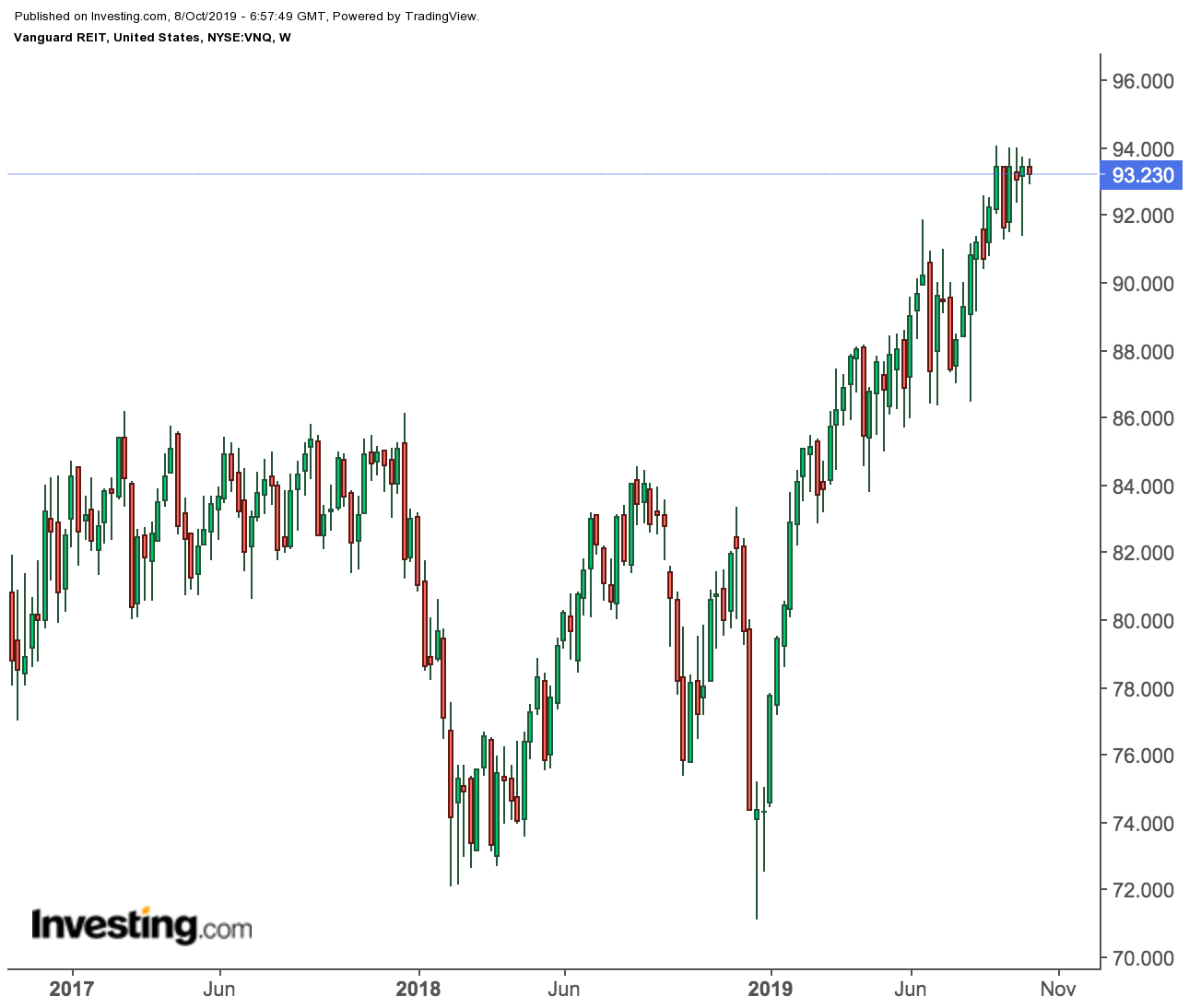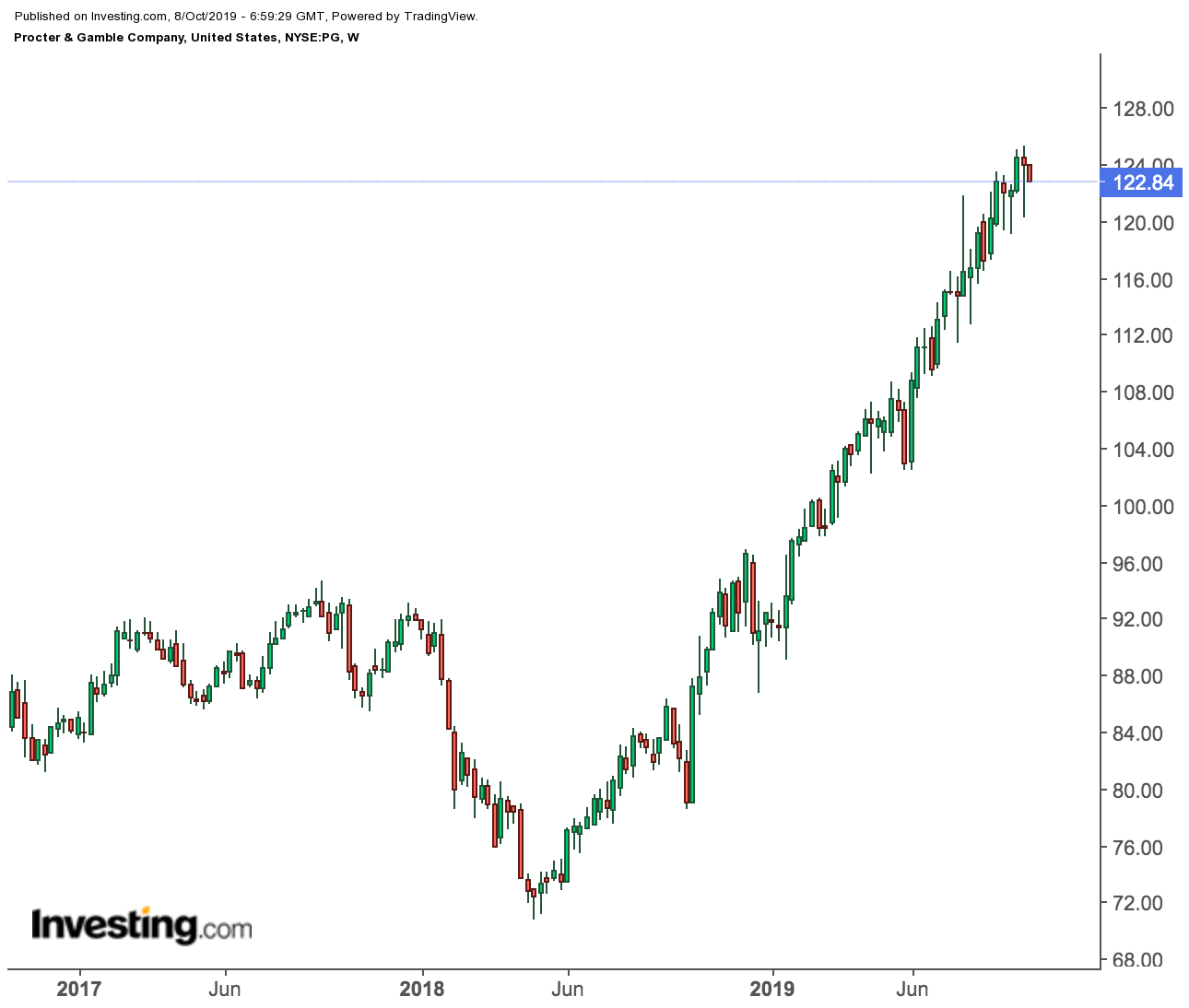Those just starting their search for some safety amid the lingering fear of recession may find they've already missed the boat. Some of the best so-called safe-haven stocks, that are particularly attractive at a time of economic turbulence, have become expensive after a strong rally in the past year.
Investors generally find refuge in bond-type investments when risks to the economy grow. Anxiety about this has been rife since the U.S.-China escalated their trade war, since several U.S. economic indicators sent extremely bearish signals, and again lately, since Congress began impeachment proceedings against the President Trump.
In a bid to prepare for the worst — a scenario in which a recession-fueled sell-off in equities sends the benchmark index in a bear territory — investors have rushed to buy utilities, real-estate investment trusts (REITs), and consumer staple stocks.
These areas of the market are known to outperform during times of distress. While investors ride through the bad times, these stocks continue to provide regular returns in the shape of dividends and regular distributions. These high-yielding stocks become more attractive as the central bank cuts rates to stave off a recession, making them appealing when you compare them with a yield on government bonds, for example.
Shift to Safety Makes Stocks Expensive
But that shift to safety this year has pushed valuation multiples to records for some safe havens. Utilities stocks, for example, ended September trading near 22 times earnings, an all-time high. REITs are now at their priciest levels in at least three years, and valuations for consumer-staples stocks are near the levels not seen since February 2018, according to Bloomberg data.
Some of our favorite safe-haven stocks are trading near record highs, leaving little choice for investors who want to play defensive in these uncertain times. Take the example of Procter & Gamble Company (NYSE:PG), the world’s biggest consumer product company.

Trading at $122.84 at yesterday's close, its shares hit a record high last month after surging more than 50% in the past year, taking its price-to-earning multiple to 86. Investors flocked to P&G because the company is one of the largest dividend payers in the sector. The maker of Dawn dish soap and Pampers has hiked its dividend for 62 consecutive years. Over the past 128 years it has never stopped paying dividends..
Real-estate ETFs have added $5.4 billion in 2019, according to Bloomberg, more than any full year since 2016. The Vanguard REIT (NYSE:VNQ), which is a proxy for the REIT sector, has gained more than 18% this year, against the S&P 500's 2% return.

No doubt, valuations of these safe-haven assets look quite rich after large and consistent inflows of the past year, but the flight to cover won’t stop as long as investors are pricing in lower interest rates in their models.
Recent data disappointments indicate that a global growth slowdown, triggered by uncertainty over the U.S.-China trade war, is deepening the industrial slowdown, consumer confidence and business investment. All of this has led investors in recent days to anticipate another rate cut later this month.
Another way to tackle this challenge is to define new areas of safety where companies have shown greater stability in earnings. Stocks, such as Microsoft (NASDAQ:MSFT) and Apple (NASDAQ:AAPL), pay dividends and are much better positioned to weather a shock to the economy due to their diversified revenue streams and huge cash piles. These names don’t come cheap either, but they will resume their growth sooner after a recession than those stocks which are closely tied with the fate of the economy.
Bottom Line
After the powerful rally of the past year, traditional safe-haven stocks have become expensive and less appealing. But if interest rates continue to fall, then this argument will not carry much weight. If the next move for interest rates is a cut, investors will still find value in stocks offering higher cash flows, further boosting their prices.
Those just starting their search for some safety amid the lingering fear of recession may find they've already missed the boat. Some of the best so-called safe-haven stocks, that are particularly attractive at a time of economic turbulence, have become expensive after a strong rally in the past year.
Investors generally find refuge in bond-type investments when risks to the economy grow. Anxiety about this has been rife since the U.S.-China escalated their trade war, since several U.S. economic indicators sent extremely bearish signals, and again lately, since Congress began impeachment proceedings against the President Trump.
In a bid to prepare for the worst — a scenario in which a recession-fueled sell-off in equities sends the benchmark index in a bear territory — investors have rushed to buy utilities, real-estate investment trusts (REITs), and consumer staple stocks.
These areas of the market are known to outperform during times of distress. While investors ride through the bad times, these stocks continue to provide regular returns in the shape of dividends and regular distributions. These high-yielding stocks become more attractive as the central bank cuts rates to stave off a recession, making them appealing when you compare them with a yield on government bonds, for example.
Shift to Safety Makes Stocks Expensive
But that shift to safety this year has pushed valuation multiples to records for some safe havens. Utilities stocks, for example, ended September trading near 22 times earnings, an all-time high. REITs are now at their priciest levels in at least three years, and valuations for consumer-staples stocks are near the levels not seen since February 2018, according to Bloomberg data.
Some of our favorite safe-haven stocks are trading near record highs, leaving little choice for investors who want to play defensive in these uncertain times. Take the example of Procter & Gamble Company (NYSE:PG), the world’s biggest consumer product company.

Trading at $122.84 at yesterday's close, its shares hit a record high last month after surging more than 50% in the past year, taking its price-to-earning multiple to 86. Investors flocked to P&G because the company is one of the largest dividend payers in the sector. The maker of Dawn dish soap and Pampers has hiked its dividend for 62 consecutive years. Over the past 128 years it has never stopped paying dividends..
Real-estate ETFs have added $5.4 billion in 2019, according to Bloomberg, more than any full year since 2016. The Vanguard REIT (NYSE:VNQ), which is a proxy for the REIT sector, has gained more than 18% this year, against the S&P 500's 2% return.

